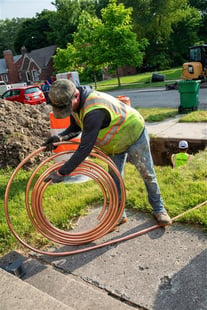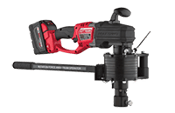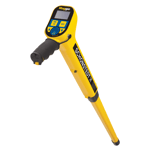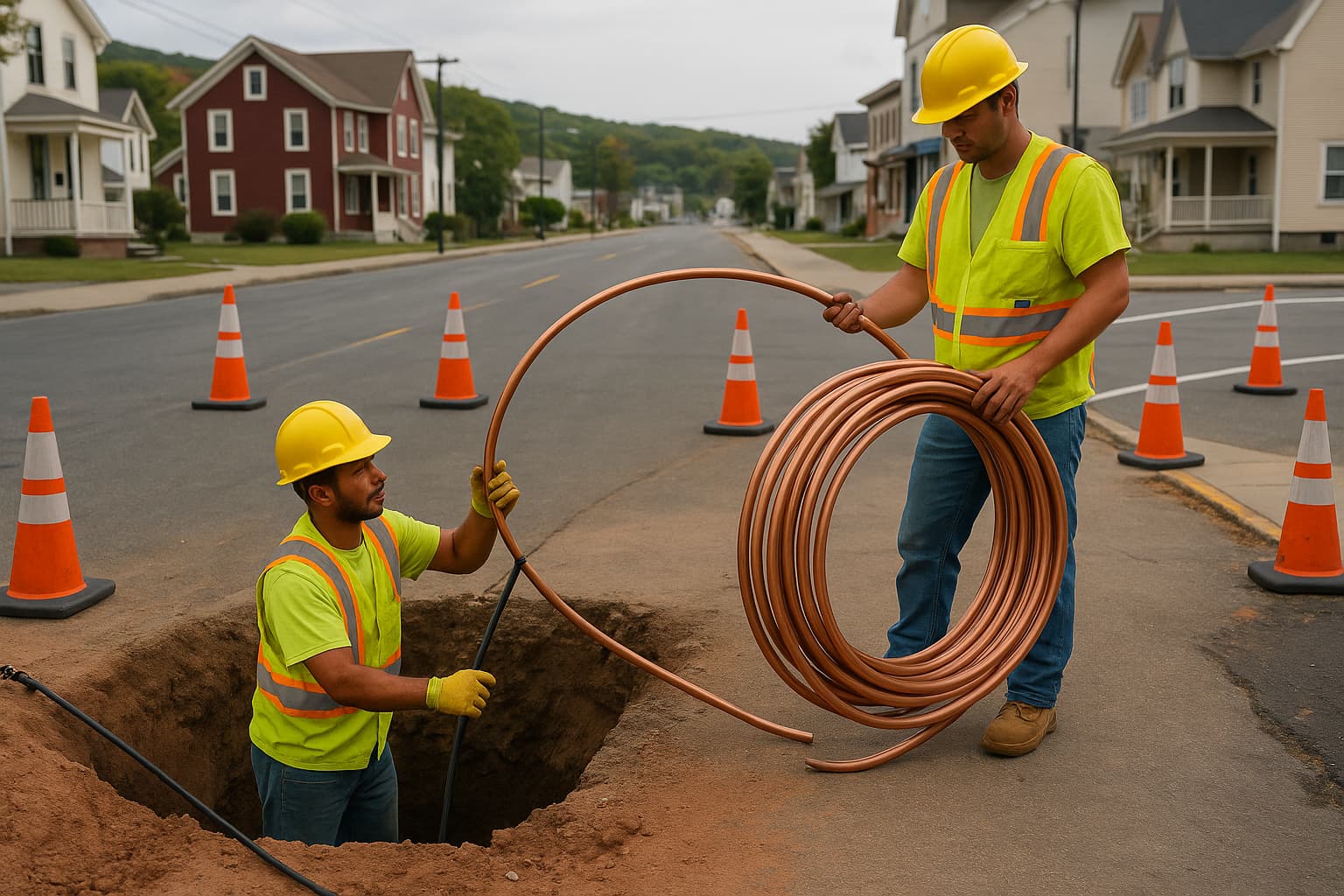- Home
- Supply Insights
- Best Practices for Replacing Water Service Lines
Replacing water service lines is a crucial maintenance task for municipalities/water utilities and property owners. Aging service lines can lead to leaks, contamination, and increased maintenance costs. Additionally, lead service lines present a potential health concern and are prime candidates for lead service line replacement. Below are some steps to ensure a successful and efficient replacement process.
Lead Service Line Replacement Requirements
In 2019, the EPA gathered information on the challenges and best practices related to lead service line replacement (LSLR). This resource is designed to support states and utilities in implementing effective and proactive lead service line replacement programs. Under certain circumstances, the Lead and Copper Rule established requirements for water systems to replace lead service lines.
The 2024 Lead and Copper Rule Improvements (LCRI) strengthened these requirements and mandates water systems to replace lead and galvanized service lines in their distribution system within 10 years. Partial service line replacement is not advised, as other pipe materials, including galvanized pipe, can also become compromised if only partially replaced.
The LCRI also expanded requirements for more rigorous drinking water testing with a lower threshold to protect communities from lead exposure in water. Enhanced communication is also a requirement to ensure communities are more informed about the risk of lead in drinking water, how to identify lead service lines, and plans to replace lead service lines.
Planning for Service Line Replacement
Replacing a water service line is a complex project that involves technical, regulatory, logistical, and financial planning. While there are many considerations and requirements for a project of this size, a few key considerations are outlined here:
Condition Assessment
- Mapping existing infrastructure to understand the layout of existing water service lines helps in effectively planning the replacement.
- Visual inspections can identify the age and material of the current system. Look for signs of leaks, corrosion, or damage, and prioritize high-risk areas.

- Test water quality to check for contaminants, such as lead or other harmful substances. The Kemio Portable Heavy Metals Analyzer is a comprehensive solution that includes all the necessary components for accurate and efficient water analysis for lead, cadmium, copper, and arsenic.
Regulatory and Legal Compliance
- Comply with federal, state, and local regulations (EPA Lead and Copper Rule).
- Obtain necessary permits (digging, road closures, traffic).
- Determine ownership boundaries (public vs. private side of the service line).
Budget and Resource Planning
- Estimate total project cost including materials, labor, restoration, and other contingencies.
- Identify funding sources.
- Plan for customer billing impacts and stakeholder communication.
- Coordinate with public works, traffic control, and emergency services.
Communication and Documentation
- Notify affected residents/businesses in advance to build trust and keep the community informed.
- Provide clear timelines, access requirements, and water outage expectations.
- Consider having customers sign consent forms prior to accessing their property.
- Keep a record of materials used, installation dates, and any issues encountered.
Testing and Quality Checks
- Conduct thorough testing to ensure that the new lines are functioning correctly.
- Pressure test to ensure the system holds pressure without leaks.
- After installation, test the water quality to ensure it meets safety standards.
Choosing the Right Pipe Material
Two of the most common materials for a water service line replacement are copper and high-density polyethylene (HDPE). Each has distinct advantages and limitations, and the choice often depends on site-specific conditions and long-term utility goals. Factors such as local soil conditions, water quality, and local regulatory requirements all need to be on considered when choosing materials.
| Copper Pipe | HDPE Pipe | ||
| Benefits |
Benefits | ||
| Durable | Durable and flexible | ||
| Resistant to corrosion | Resistant to corrosion | ||
| Withstands high temperatures | Long service life | ||
| Challenges |
Challenges |
||
| More expensive | Requires heat fusion or mechanical fittings | ||
| Less flexible |
Choosing between copper and HDPE for a water service line replacement depends on various factors. Many modern utilities are moving toward HDPE for its installation flexibility and resistance to corrosion, but copper remains the standard in areas with existing copper infrastructure, or where perception, fire resistance, or microbial safety are paramount.
Service Line Replacement Tools
Replacing a water service line requires specialized tools to safely isolate the system, locate underground infrastructure, and remove or install piping efficiently. Having the right tools on hand makes the job much easier and quicker.
Valve Shutoff Tools
Used to isolate the section of the water main where the service line connects, preventing water flow during removal and installation. These include curb and valve box tools and portable valve exercisers.
Pipe and Utility Locators
You must accurately locate underground utilities (including water, gas, sewer, and electric lines) before digging, to reduce the risk of damaging other infrastructure. These include magnetic locators and pipe and cable locators.
Pipe Pullers and Splitters
Used to replace service lines using the trenchless method, pipe pullers and splitters eliminate the need to dig up the entire service line - reducing time, materials and manpower costs.
Safety Considerations
Safety is a top priority when replacing a water service line, as the work involves excavation, pressurized water systems, and potential interactions with other underground utilities. Workers must follow proper trenching and shoring protocols to prevent cave-ins, wear appropriate personal protective equipment (PPE), and verify utility locations to avoid hitting gas or electric lines.
Valves must be properly shut off to avoid uncontrolled water flow, and care should be taken to control traffic and protect pedestrians in public areas.
Additionally, contractors must be trained in confined space entry, lockout/tagout procedures, and safe handling of tools and materials such as torches (for copper) or fusion equipment (for HDPE). Safety briefings and ongoing hazard assessments help ensure a safe job site for both workers and the public.
Ongoing Maintenance of Your Service Lines
Replacing a water service line or fixing a broken water main is a significant undertaking that requires careful planning and execution. By following best practices, such as conducting thorough assessments, choosing the right materials, engaging professionals, and maintaining open communication, stakeholders can ensure a smooth and successful replacement process that enhances the reliability of water services for the community.
Implementing a regular maintenance schedule to monitor the condition of service lines should also be part of your plan. Having a proactive approach can help identify potential issues before they escalate into costly repairs.


